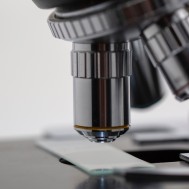For manufacturers, ensuring their product is high-quality and functioning to its fullest potential is extremely important. Not only does this effect their customers, but their reputation, profitability and competitive standing in the industry as well. Quality holds a lot of weight, especially in products that play a critical role in high-stakes applications, like rubber o-ring seals in the medical industry, for example.
In order to confirm that a product is made to company standards, a qualification process must be set in place. Apple Rubber runs extensive rubber part qualification testing throughout their engineering phase to ensure the materials they are using are right for the application and are free of any defects. From raw material testing to testing the finished product, qualification tests are crucial for manufacturers. Here are four important rubber part qualification steps you need to know:
A quality checklist is necessary throughout the entire design process.
To keep track of a product throughout the design and manufacturing process, a company should have a quality checklist in place. This will ensure that every part is tested equally and held to the same standards, eliminating the risk of defective products leaving the facility.
Apple Rubber is focused on making sure each product is exactly what the customer expects and meets their specific requirements. To do this successfully, Apple Rubber begins its quality testing process with a quality form F-39. This form follows a product from raw material selection to finished product testing and is used to verify that each manufactured part lives up to Apple Rubber’s high standards. Without an efficient checklist in place, some parts could miss out on certain tests or testing results could be documented incorrectly.
Every rubber has its own specific gravity.
Since most rubber is black, it can be difficult to decipher between materials with the naked eye. However, different types of rubber have very specific gravities, so engineers can ensure they’re using the correct rubber material through specific gravity testing. Some of Apple Rubber’s most popular rubber compounds include Viton®️ with a density of 1.87, Nitrile with 1.2 and Neoprene with 1.47.
This test is done by comparing the weight of dry rubber specimen to the weight of the specimen when submerged in water. The specific gravity of rubber is determined by high precision analytical balances per ASTM method D297. This test is an important step because parts with a higher density typically have a higher cost. A part with a higher density also weighs more, so shipping costs can be affected as well.
Tensile testing is a critical step in the design phase.
Tensile testing is a universal test machine that determines how materials will behave under tension. The results of this test will give a measurement of a materials tension and elongation. This test is critical for selecting the appropriate material during the design phase because it reveals the materials seal performance quality.
For Apple Rubber, all material specifications start with durometer, tensile and elongation. Tensile tends to correspond with durometer, so it’s important to confirm that the durometer is measured correctly before moving out of the tensile testing phase. Materials with low durometer tend to have low tensile and work best in low-pressure applications, while materials with high durometer usually have high tensile and function best in high-pressure applications.
Finished products should undergo visual and automated testing.
Finished products are tested a little differently than raw materials. At Apple Rubber, the parts undergo a visual attribute inspection to ensure the surfaces of the rubber parts are acceptable. Inspectors review the parts for surface defects like knit lines, nonfills and foreign material.
After the finished rubber products are sampled for visual defects, an automated testing process should be in place. Apple Rubber uses a visual measuring machine called Micro-Vu. This machine is programmed to specific dimensions and automatically measures the product quickly and precisely. Since the product is automated, there is a low risk for any mistakes and dimensional inspection takes less time. Measuring the geometry of specific features is particularly important for seals because it gives both the customer and Apple Rubber the confidence that their product will meet expectations.
Part qualification is crucial for manufacturers and should be taken very seriously to ensure each product is of the highest quality and is free of defects. Implementing a qualification system into your facility will reduce the risk of customers receiving low-quality products that don’t meet their standards.
Want to talk more about our part qualification process?
Tweet us @AppleRubber to continue the conversation.
